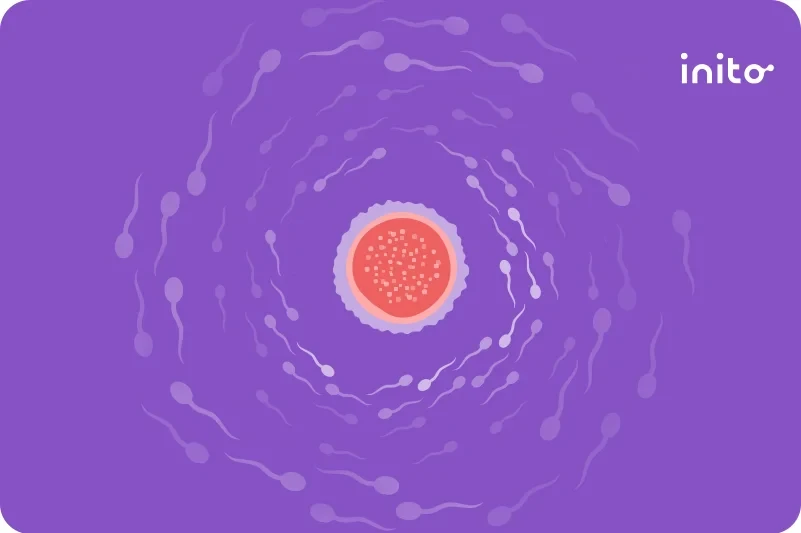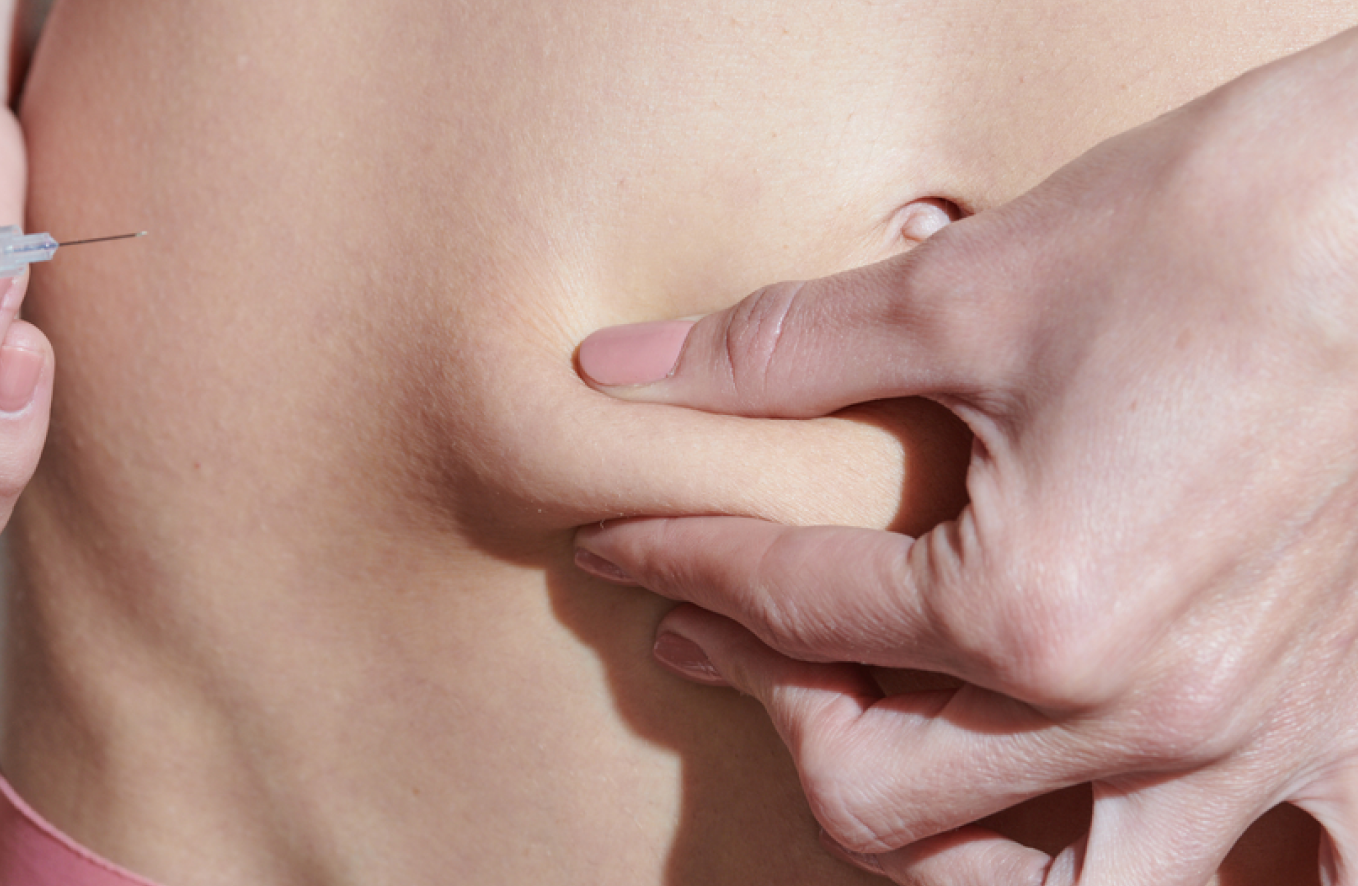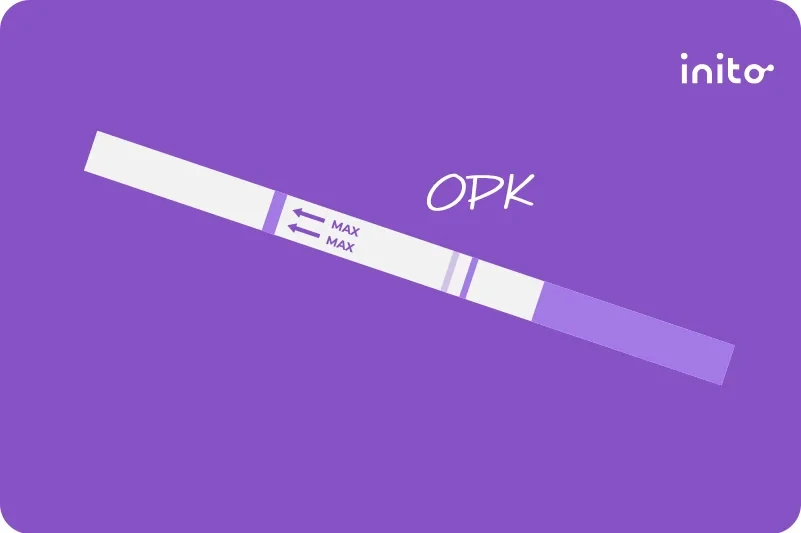Content table
Getting a negative ovulation test when you’re trying to get pregnant can be frustrating and confusing. Especially when you’re still getting your periods each month.
Your mind can start spinning with questions:…
“Why am I having regular periods – but not ovulating?”
“How is that even possible?”
“Aren’t periods when your body cleans up shop after an egg is dropped? So what gives?”
Well, sometimes what looks like a period, isn’t always a period. It could be breakthrough bleeding due to not ovulating.
So read on to understand why you’re not ovulating but still having periods. Plus, we’ll cover the top reasons for not ovulating every month and what you can do to support ovulation.
But first, let’s lay the groundwork with some basics of menstruation.
Takeaways
- You need to ovulate to become pregnant.
- Progesterone levels increase after ovulation, which helps counterbalance estrogen.
- Without ovulation, estrogen may get too high, leading to estrogen dominance.
- Anovulation is when your ovaries fail to release an egg during your menstrual cycle.
- Signs of anovulation include irregular or missed periods, low cervical mucus, and abnormal BBT.
- If you don’t ovulate, you may have some anovulatory bleeding. Although this may resemble your period, it’s not.
- Menstruation happens due to a drop in progesterone as the corpus luteum breaks down.
- Anovulatory bleeding happens when the endometrium becomes unstable and sloughs off. It also occurs when estrogen drops.
- Some causes of anovulation include low or high BMI, extreme exercise, and chronic stress.
- Testing your progesterone and its metabolite PdG levels can help confirm whether you’re ovulating. This can be done via an at-home fertility monitor like Inito that measures PdG, or progesterone blood testing.
A refresher on your menstrual cycle
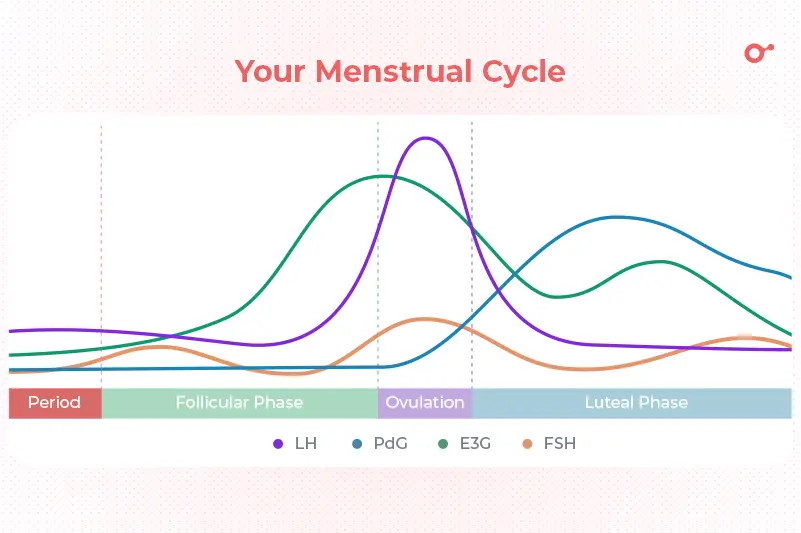
Your menstrual cycle is run by a delicate balance of hormones. These hormones’ interactions are what cause ovulation – and your period.
So let’s break some of these hormones down.
Your hypothalamus secretes gonadotropin-releasing hormone (GnRH). GnRH then stimulates your pituitary gland to produce follicle stimulating hormone (FSH).
Each month, FSH causes the follicles in one ovary to mature. But only one follicle goes on to form a fully mature egg (aka the ‘dominant follicle’).
As the dominant follicle matures, it produces estrogen. This rise in estrogen helps build up the lining of the uterus (endometrium). But it also prompts the pituitary gland to produce more luteinizing hormone (LH).
Around 24-36 hours before ovulation, LH surges. This triggers the follicle to release the egg.
After the egg is released, the empty follicle forms the corpus luteum. This structure produces progesterone, causing the uterine lining to thicken in case of a possible pregnancy.
If the timing’s right and a sperm and egg meet – fertilization may occur. If it does, the fertilized egg travels down the fallopian tube to prepare to attach to the uterine wall.
But if fertilization doesn’t occur, the corpus luteum breaks down and progesterone drops. This causes the lining of the uterus to shed, which shows up as your period.
If the timing’s right and a sperm and egg meet – fertilization may occur. If it does, the fertilized egg travels down the fallopian tube to prepare to attach to the uterine wall.
But if fertilization doesn’t occur, the corpus luteum breaks down and progesterone drops. This causes the lining of the uterus to shed, which shows up as your period.
Why is ovulation important?
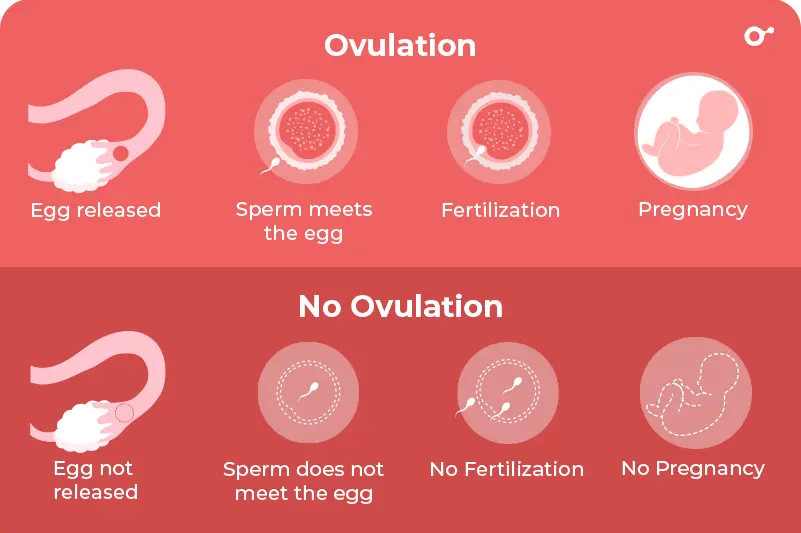
Well for starters, if you don’t ovulate, you can’t get pregnant. Without ovulation, sperm cannot fertilize the egg. No fertilized egg = no pregnancy.
But ovulation is important whether you’re trying to conceive or not!
Without ovulation, progesterone levels decline. Progesterone is crucial to balance out the effects of estrogen.
When progesterone gets too low, estrogen levels can get out of control. This can lead to a condition called estrogen dominance.
Estrogen dominance can cause weight gain, irregular cycles, anxiety, and much more. Plus, when the estrogen-progesterone ratio gets out of whack, it can pose problems for fertility.
Ovulation helps keep the estrogen-progesterone balance in check. This boosts your overall health and fertility.
Now that you understand why ovulation is important, let’s cover what happens when it takes a hiatus.
What is Anovulation?
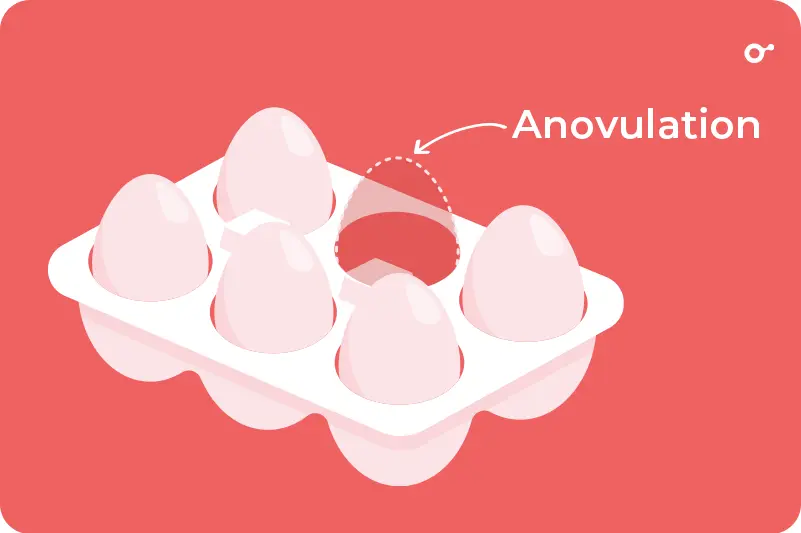
Anovulation is when your ovaries don’t release an egg during your menstrual cycle. It’s common to have an anovulatory cycle now and then.
But chronic anovulation is another story. Chronic anovulation is when you don’t ovulate for several cycles back-to-back. It’s to blame for around 30% of all infertility problems in women.
How do you know you’re not ovulating?
The main warning sign of anovulation is irregular periods. Normal menstrual cycles fall anywhere between 21 to 35 days. If your cycles are shorter or longer than that range, that’s one clue you may not be ovulating.
Other signs of anovulation include:
- Missing periods
- Very heavy or light periods
- Lack of cervical mucus
- Irregular basal body temperature (BBT)
The symptoms above may point to anovulation. But getting a follicular scan or testing progesterone are the only ways to know for sure. Unfortunately, many ovulation tests only measure luteinizing hormone (LH).
While LH is a handy tool for predicting ovulation, it doesn’t confirm it. Progesterone does.
Remember, progesterone and its metabolite PdG rise after the mature egg is released. So if you’re concerned you’re not ovulating, choose a fertility monitor that measures PdG, such as Inito.
And for a deeper dive into anovulation, check out this article.
Next up, let’s cover everyone’s burning question.
Can you have periods and not ovulate?
If you don’t ovulate, you may have some anovulatory bleeding, also known as breakthrough bleeding.
Anovulatory bleeding may resemble your period. But technically, it’s not. Here’s why…
Anovulatory bleeding vs period: what’s the difference?

Menstruation is due to a drop in progesterone. This decline happens when the corpus luteum, the structure that produces progesterone, breaks down.
But if you don’t ovulate, the corpus luteum never forms. Without the corpus luteum, progesterone doesn’t drop, and the uterine lining continues to build.
Over time, this can make the endometrium unstable. This can lead to heavy bleeding that may seem like your period.
Also, when high levels of estrogen are unopposed by progesterone, it causes the uterine lining to grow excessively and also makes the blood vessels around the uterine lining fragile.
And when there is a drop in estrogen levels, it causes breakthrough bleeding with an increased volume of blood loss.
Why am I not ovulating?
The main cause of anovulation is an imbalance of hormones.
Anovulatory cycles are common in the first year of menstruation and during perimenopause. Both times when your hormones are all over the map!
Anovulation may also be caused by:
Polycystic ovary syndrome (PCOS)
This condition causes the body to produce high levels of male hormones (androgens). This can throw off other hormones, leading to irregular cycles and fertility problems. Around 70% of all anovulation is due to PCOS.
Hypothyroidism
If your thyroid hormones are low, it can increase the hormone prolactin. Prolactin suppresses FSH and LH – both needed for ovulation.
Unhealthy body weight
If your body mass index (BMI) is too high or too low, it can cause hormonal imbalances. This can lead to anovulatory cycles.
Excessive exercise
Extreme exercise can cause problems with your pituitary gland, which secretes LH and FSH. This can hamper ovulation.
Chronic stress
Too much stress can cause your body to produce high levels of the stress hormone cortisol. When cortisol production increases, progesterone declines.
Certain medications
NSAIDs, steroids, anti-seizure medications, and cancer drugs can all cause anovulation.
If you’re having regular periods but having trouble getting pregnant, you could have an ovulation problem.
But don’t worry! With some lifestyle changes and your doctor’s support, you can get your ovulation back on track.
Treatment for anovulation
Management of anovulation depends on the cause – which is different for everyone.
If health conditions are causing anovulation, those will need to be addressed first. For example, if you’re not ovulating due to thyroid issues, those imbalances need to be corrected to support hormone balance.
But if anovulation is due to lifestyle habits, you’ll want to make changes to your diet or exercise routine.
This could mean toning down your workouts or practicing daily stress relief. Depending on your weight, you may need to increase or decrease your daily calories to support a healthy BMI.
When to see a doctor?
Speak with your doctor If you have any health conditions you suspect are causing anovulation.
If your doctor finds your anovulatory cycles are due to internal imbalances, they may prescribe fertility medications. These medications can help stimulate the follicles and trigger the release of an egg.
Your doctor may recommend blood testing to measure your progesterone levels. Ultrasounds may also be ordered to check for any problems in the ovaries or uterus.
Unfortunately, getting testing can be expensive and inconvenient. One easy DIY way to get insights on ovulation is to use a fertility monitor. 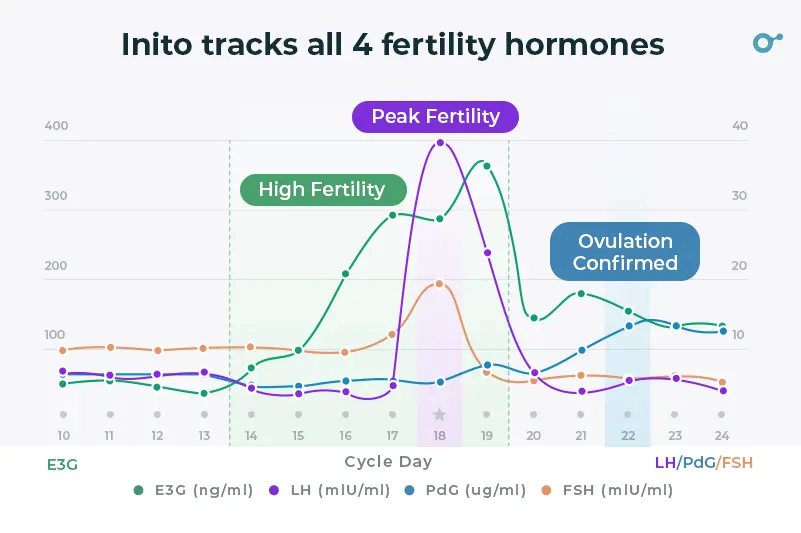
The Inito Fertility Monitor measures LH, estrogen, PdG (urine metabolite of progesterone), and FSH. This gives you a clear picture of your fertile window and confirms ovulation – all from the comfort of your home.
You also get personalized hormone charts you can share with your doctor. This can help them create a proper treatment plan to get ovulation back on track.

FAQs
Yes. Some women may think they’re having their period–when really it’s breakthrough bleeding due to anovulation. Anovulation is when the ovaries don’t release an egg. It’s the leading cause of infertility in women.
When your body releases an egg, it may send some signals. Basal body temperature rises slightly after ovulation and cervical mucus becomes slippery and clear like egg-whites. Some women also get mild cramping when an egg is released. Still, taking a progesterone or PdG test is the only way to confirm ovulation for sure.
Speak to your doctor. They can look into any imbalances that may be interfering with ovulation. You can also make healthy lifestyle changes to shift your hormones for the better. Maintaining a healthy weight, managing stress, and regular exercise can all support hormone balance.
Was this article helpful?
- Anovulatory Bleeding – StatPearls – NCBI Bookshelf
- ABC of subfertility: Anovulation – PMC
- Non-steroidal anti-inflammatory drugs inhibit ovulation after just 10 days — ScienceDaily
- Disturbance of the menstrual pattern after local injection with triamcinolone acetonide | Annals of the Rheumatic Diseases
- Effect of epilepsy on female fertility and reproductive abnormalities – PMC
- Female Fertility Issues and Cancer – Side Effects – NCI





